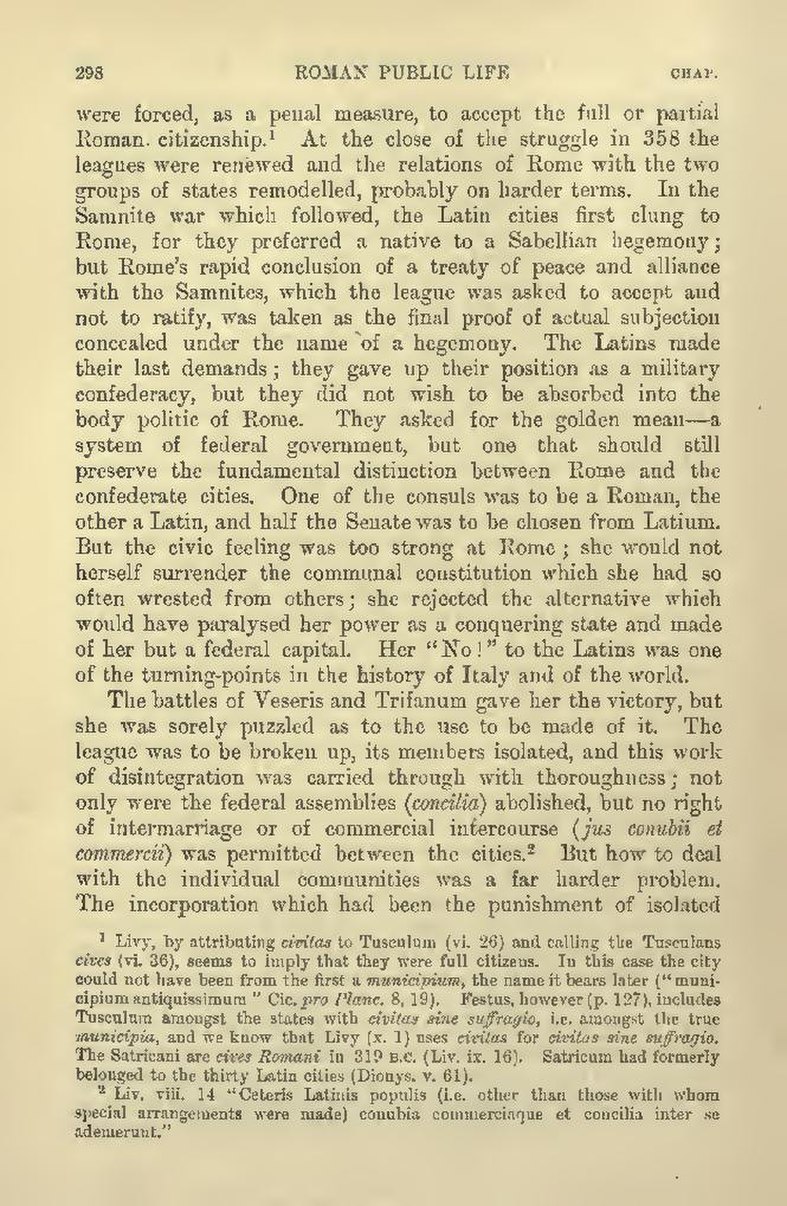were forced, as a penal measure, to accept the full or partial Roman citizenship.[1] At the close of the struggle in 358 the leagues were renewed and the relations of Rome with the two groups of states remodelled, probably on harder terms. In the Samnite war which followed, the Latin cities first clung to Rome, for they preferred a native to a Sabellian hegemony; but Rome's rapid conclusion of a treaty of peace and alliance with the Samnites, which the league was asked to accept and not to ratify, was taken as the final proof of actual subjection concealed under the name of a hegemony. The Latins made their last demands; they gave up their position as a military confederacy, but they did not wish to be absorbed into the body politic of Rome. They asked for the golden mean—a system of federal government, but one that should still preserve the fundamental distinction between Rome and the confederate cities. One of the consuls was to be a Roman, the other a Latin, and half the Senate was to be chosen from Latium. But the civic feeling was too strong at Rome; she would not herself surrender the communal constitution which she had so often wrested from others; she rejected the alternative which would have paralysed her power as a conquering state and made of her but a federal capital. Her "No!" to the Latins was one of the turning-points in the history of Italy and of the world.
The battles of Veseris and Trifanum gave her the victory, but she was sorely puzzled as to the use to be made of it. The league was to be broken up, its members isolated, and this work of disintegration was carried through with thoroughness; not only were the federal assemblies (concilia) abolished, but no right of intermarriage or of commercial intercourse (jus conubii et commercii) was permitted between the cities.[2] But how to deal with the individual communities was a far harder problem. The incorporation which had been the punishment of isolated
- ↑ Livy, by attributing civitas to Tusculum (vi. 26) and calling the Tusculans cives (vi. 36), seems to imply that they were full citizens. In this case the city could not have been from the first a municipium, the name it bears later ("municipium antiquissimum" Cic. pro Planc. 8, 19). Festus, however (p. 127), includes Tusculum amongst the states with civitas sine suffragio, i.e. amongst the true municipia, and we know that Livy (x. 1) uses civitas for civitas sine suffragio. The Satricani are cives Romani in 319 B.C. (Liv. ix. 16). Satricum had formerly belonged to the thirty Latin cities (Dionys. v. 61).
- ↑ Liv. viii. 14 "Ceteris Latinis populis (i.e. other than those with whom special arrangements were made) conubia commerciaque et concilia inter se ademerunt."
